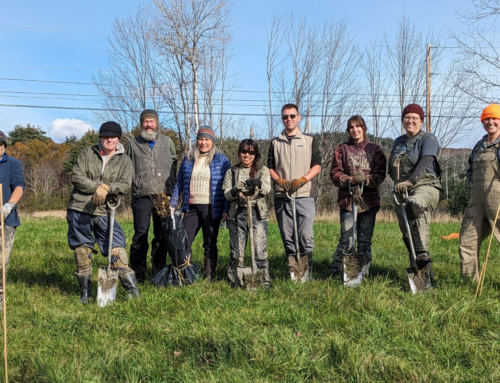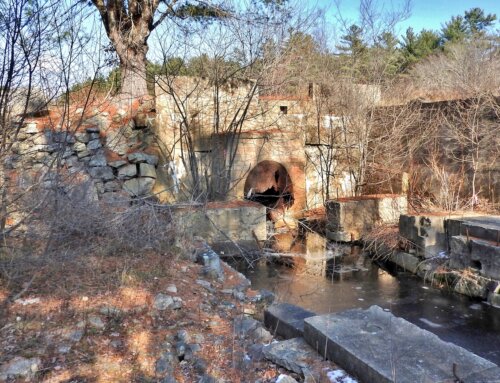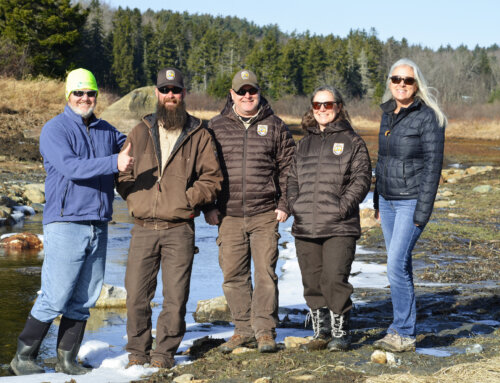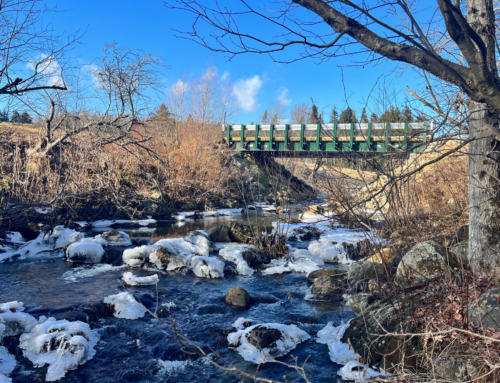November 9, 2017
Honorable Kimberly D. Bose Secretary
Federal Energy Regulatory Commission
888 First Street, NE
Washington, DC 20426
Re: Northfield Mountain Project No. 2485-076
Response of Connecticut River Conservancy and Franklin Regional Council of Governments to FirstLight’s Answer re: Application for Temporary Amendment of License
Dear Secretary Bose,
The Connecticut River Conservancy (CRC) and the Franklin Regional Council of Governments (FRCOG) jointly filed a motion to intervene and comments to the above referenced application for amendment of license dated October 27, 2017. On November 1, 2017, FirstLight Hydro Generating Company filed an “Answer of FirstLight Hydro Generating Company to Motions to Intervene and Comments on Request for Temporary Amendment” (“Answer”). CRC and FRCOG have reviewed FirstLight’s Answer, and below are our responses to the Answer.
Responses
Concern over changes in river fluctuation pattern is justified
FirstLight’s Answer on page 3 incorrectly states, “Further, there is no evidence that the ‘integrity’ of erosion mitigation projects along the Impoundment is threatened by the temporary change in the water surface elevation limits of the upper reservoir.”
CRC and FRCOG note that we have attended many meetings of the Connecticut River Streambank Erosion Committee (CRSEC) over the years, during which we worked with the licensee and the licensee’s consultants to identify sites for bank restoration work, see the work through, and follow up on treated sites. Everyone involved in CRSEC over the years knows that the key to the stabilization work is to provide sufficient stabilization in the everyday fluctuation range of the river. As an example of why we are concerned about any activity that might change a pre-existing pattern of operation is shown in the CRSEC meeting minutes from the October 30, 2013 meeting, describing a presentation by FirstLight’s consultant, Mickey Marcus of New England Environmental (Attachment A). On page 2 of the meeting minutes, it said,
“Mickey said work on Tom Shearer’s property is scheduled for fall 2014. The problem at the site is the original stone toe was not placed at the proper elevation (not high enough) to withstand water level fluctuations. The live stake willows didn’t become well established in the coir logs above the stone so when the coir logs degraded and washed away, erosion became a problem above the stone toe. More stone needs to be placed at a higher elevation. Mickey said the slope is stable and there is no erosion except above the current stone toe. “
The Fluvial Geomorphology Study conducted for FirstLight by Field Geology Services in 2007 also noted something similar: “While the projects remain largely intact, a number of maintenance issues have arisen that have necessitated repairs. At several sites, the coir logs have been removed by water currents or pushed out by mass movements higher on the bank. Once removed, notching of the bank just above the rock armor has ensued and can lead to planar slip failures on the upper slope.” (page 35)
As we noted in our Motion to Intervene dated November 21, 2016, FirstLight’s 2015-2016 Amendment Report shows that the average lower reservoir elevation was half a foot higher, 181.7 ft during the 2015-2016 amendment period, compared to 181.2 ft during non-amendment years. This was also the case during the 2014-2015 amendment period. A higher average elevation has the potential to contribute to notching (erosion) above a stone toe, leading to destabilization of the riverbank.
FirstLight’s Answer on page 3 said, “As FirstLight pointed out last year when CRC made the same unsubstantiated claim, bank stabilization treatments were designed to accommodate the full range of operating conditions in the Impoundment permitted by the license.” The above demonstrates that that is not the case.
CRC asserts that Article 20 of the current license is in effect
Article 20 from the Northfield Mountain Project P-2485 license (1968) states that, “The Licensee shall be responsible for and shall minimize soil erosion and siltation on lands adjacent to the stream resulting from construction and operation of the project.” (emphasis ours)
Appendix H from the 2014 Full River Reconnaissance (also called relicensing study 3.1.1) includes profiles of 38 land-based observation sites along the banks. The drawings of the detailed study sites speak for themselves on the processes of erosion affected by project operations. See attached drawings of sites 18, 21, 26, and 29 from Appendix H of the 2014 Full River Reconnaissance. The attached examples, and many other sites, show notching at the water line. The 2007 Fluvial Geomorphology Study (Field Geology Services) on page 31 described the process: “A stable bank can become destabilized by the individual removal of particles, leading to the creation of a notch or undercut at the base of the bank. As the notch grows taller and steeper by advancing further into the bank or the undercut deeper and higher through falls, the driving gravitational forces will eventually exceed the bank’s resisting forces…. As all of the material that has accumulated at the base of the bank is carried away, a steep bare bank face remains.” This explanation is backed up by years of experience at CRSEC meetings and CRSEC boat tours, during which we observed notches developing in the exact area of the rise and fall of daily river fluctuations (further battered by boat wakes) and oversaw restoration projects designed to stabilize the entire bank, but with additional armor at the fluctuation area.
Request for additional information is reasonable
FirstLight objects on page 6 of their Answer to the additional detail requested by us. Much of what we requested can easily be provided. We clarify two requests below.
- Narrative in reports can describe previous temporary amendment periods, and what limitations there were (if any) on when the extra capacity to be used. For the years that had ISO-NE-triggered restrictions, it is very easy to describe on what dates the use of the capacity was triggered. For the two years that the extra capacity was allowed for the amendment period, a statement of no restrictions (other than the amended upper reservoir elevations) is enough.
- River elevation ranges are available and can be put on transect profiles. FirstLight has logger data, and a river hydraulic model that uses HEC-RAS transects, and it is possible to come up with a basic range of where the river level fluctuates at specific locations within the impoundment during normal project operations (less than 15,938 cfs). See, for example, the graph from TransCanada’s Study 2 and 3 (Attachment C). The gray area of river fluctuations, combined with elevations at high flow events, are all useful for the examination and interpretation of the transect figure. In the past, FirstLight has placed a “water level” line on the transect figures at a single arbitrary elevation that was not explained.
As we have said in our Motion to Intervene, operations that exacerbate existing erosion problems should be reserved solely for emergencies.
Thank you for the opportunity to respond. I can be reached at adonlon@ctriver.org or (413) 772-2020 x.205.
Sincerely,
Andrea F. Donlon
River Steward
Bill Perlman
FRCOG Executive Committee Chair
ATTACHMENTS
Attachment A: CRSEC Meeting Minutes from October 30, 2013
Attachment B: Attachment H from relicensing study 3.1.1, the Full River Reconnaissance
Attachment C: Graphs provided as an appendix to TransCanada’s relicensing study 2 and 3







